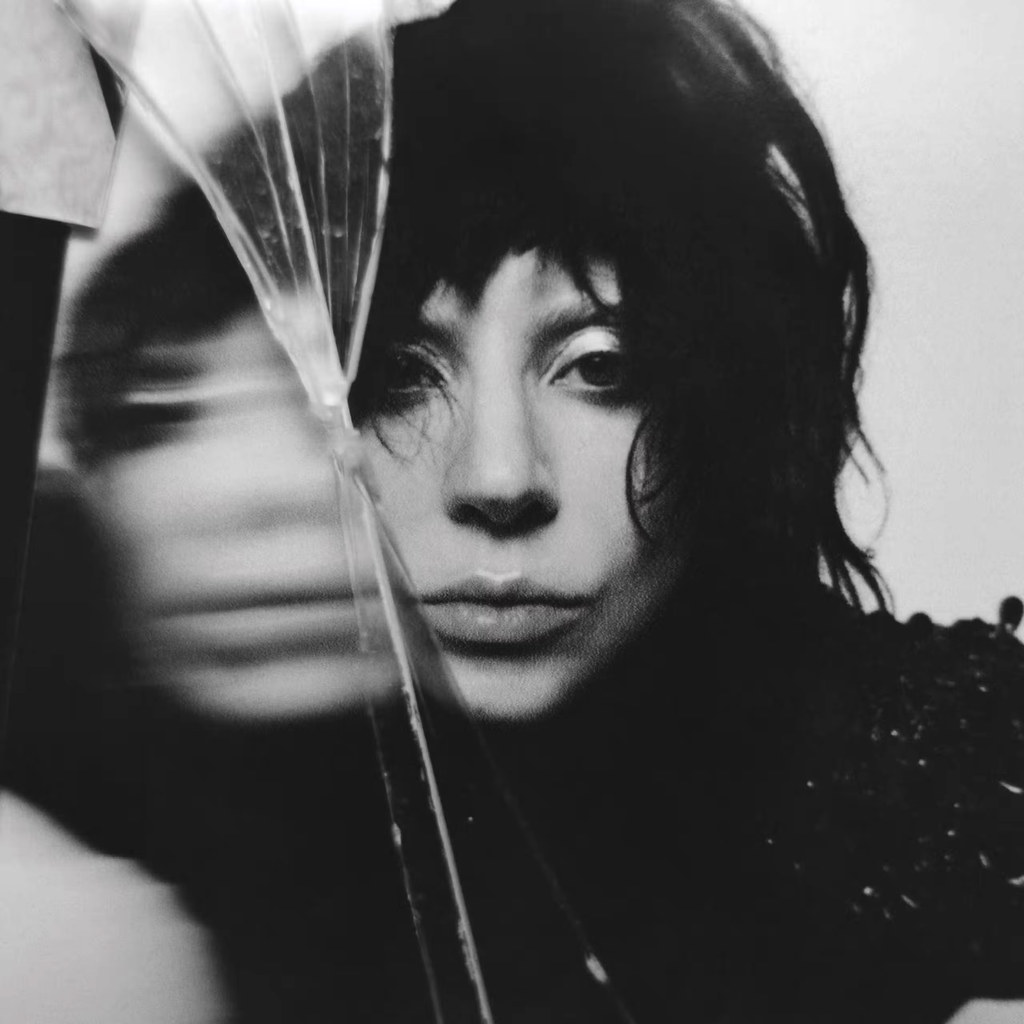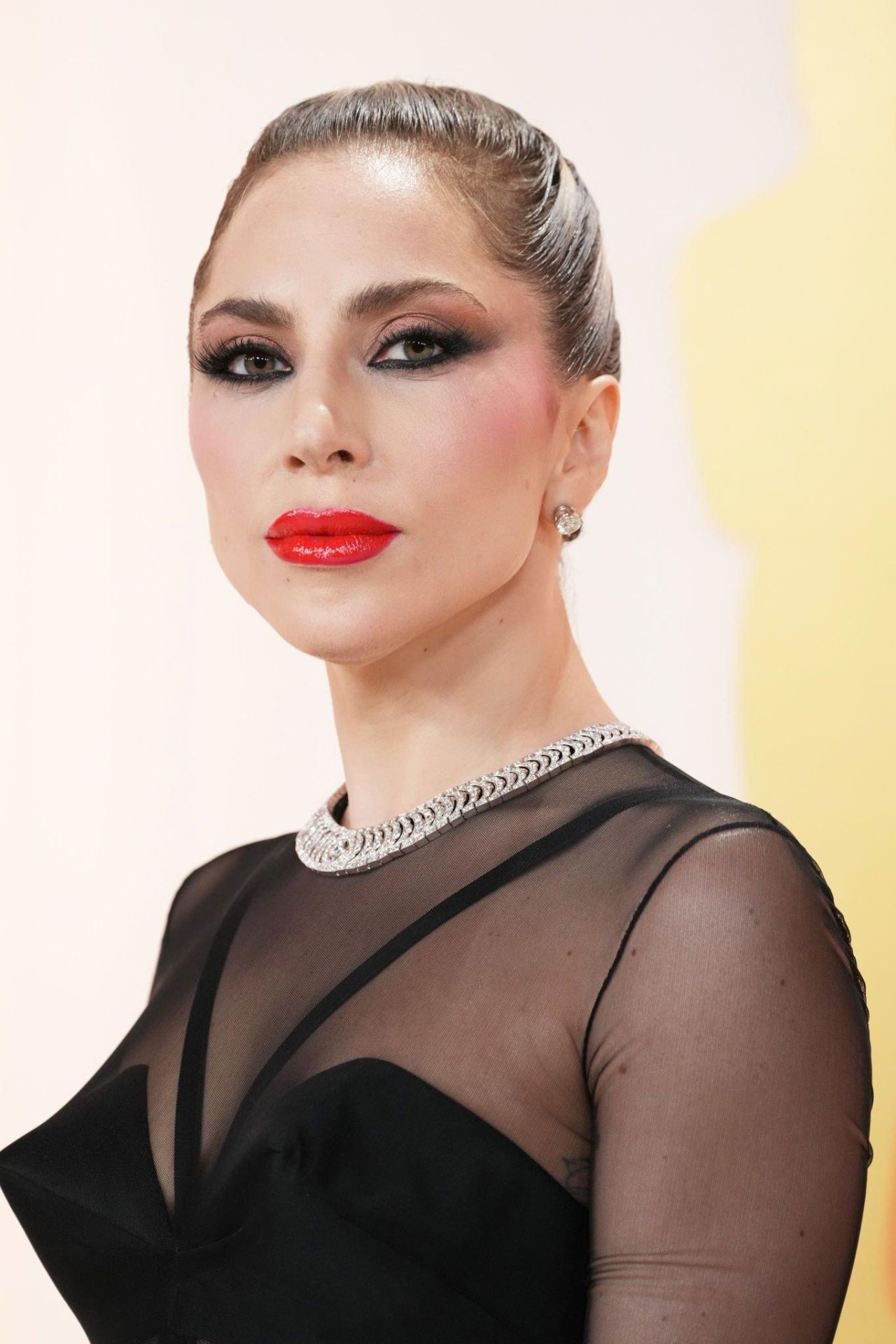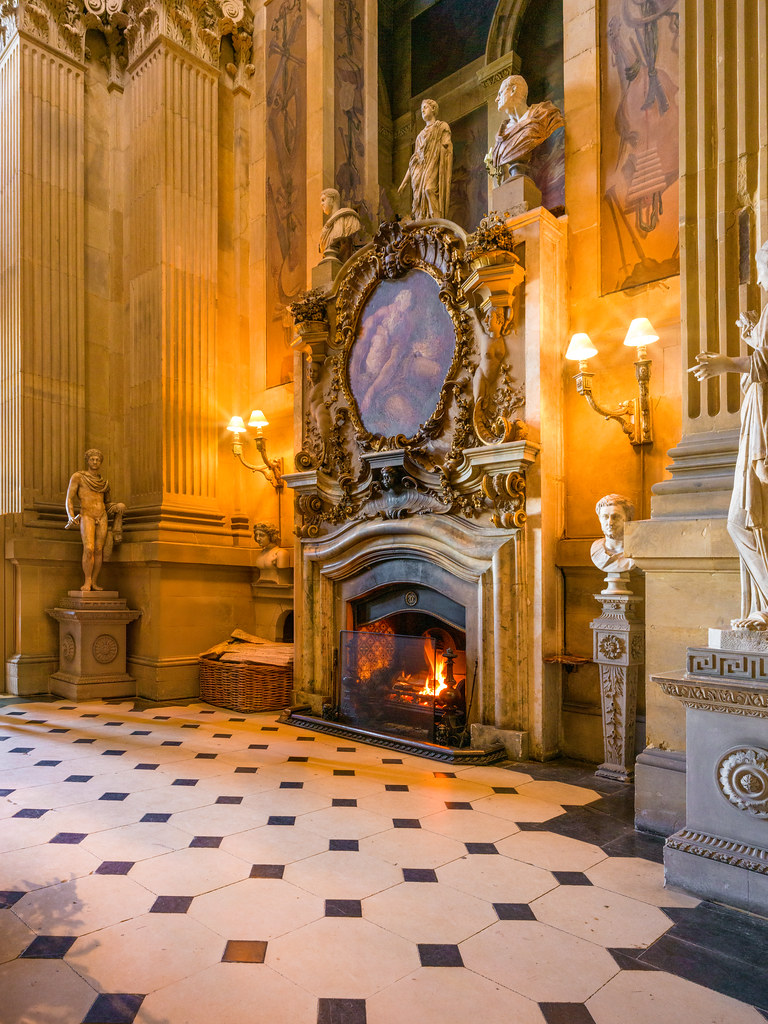
Alright, buckle up, word nerds and curious minds, because we’re about to take a wild, whirlwind tour through the history and incredible evolution of a single word that you might think you know, but trust us, you only know the half of it! We’re talking about ‘Lady’ – a term that has gone from humble household duties to commanding respect across centuries, cultures, and even the hallowed halls of nobility. Get ready to have your mind blown!
Seriously, this isn’t just about dusty old dictionaries; it’s about how language reflects society, power, and everyday life. From ancient origins tied to the very sustenance of a home, to becoming a symbol of grace, authority, and even polite forms of address in public restrooms (yes, really!), the journey of ‘Lady’ is a fascinating reflection of shifting gender roles and societal expectations. It’s a word with layers, darling, and we’re peeling them all back.
Prepare to discover how ‘Lady’ navigated linguistic landscapes, survived social upheavals, and even sparked heated debates among thinkers and feminists. We’ll dive into its surprising job descriptions, its class distinctions, and how it continues to shape our conversations today. So, without further ado, let’s jump right into the captivating story of the word ‘Lady’ – because it’s so much more than just a polite designation!

1. **The Origin Story: From Bread-Kneader to High Status**Prepare to have your perception of ‘Lady’ flipped upside down because its earliest meaning is literally rooted in the kitchen! The word ‘lady’ actually originates from the Old English term ‘hlǣfdīġe,’ which translates quite charmingly to ‘bread-kneader.’ Can you believe it? This wasn’t some fancy, aloof title, but a practical descriptor for the ‘mistress of a household,’ the woman responsible for the vital task of providing sustenance.
This ancient etymology tells us so much about the fundamental role women played in early societies. The word ‘hlǣfdīġe’ is a compound of ‘hlāf,’ meaning ‘bread’ or ‘loaf,’ and ‘dīġe,’ meaning ‘kneader,’ which is also related to the Old English ‘dǣġe,’ meaning ‘maker of dough.’ So, essentially, the original ‘lady’ was the chief baker and provider for her home, a role of immense importance and responsibility.
It’s mind-boggling to think that a word now associated with elegance and high society began with such a down-to-earth, hands-on connotation. This initial meaning, ‘mistress of a household,’ is now mostly obsolete in common parlance, though you might still catch a glimpse of it in the term ‘landlady’ or in the quaint phrase ‘the lady of the house.’ It even retains this historical resonance in some of the southern states of the United States, keeping a piece of its ancient past alive!

2. **Beyond the Kitchen: ‘Lady’ as a Mark of Nobility and Authority**But fear not, ‘Lady’ didn’t stay kneaded into dough forever! Over time, its meaning gracefully ascended from the domestic sphere to denote a ‘woman of breeding or higher class’ and a ‘woman of authority.’ Imagine the transition from a practical household manager to someone recognized for their social standing and influence. This transformation truly highlights the evolving social structures of medieval England.
This elevated sense of ‘lady’ became the feminine counterpart to ‘lord,’ mirroring the hierarchical titles of the era. The context explicitly notes that during the Middle Ages, princesses or daughters of the blood royal were often known by their first names with ‘Lady’ prefixed, such as ‘The Lady Elizabeth.’ This was because Old English and Middle English lacked female equivalents for ‘princes’ or ‘earls,’ making ‘Lady’ the go-to title for women of royal and noble status, apart from the queen herself.
The word’s use in literature beautifully captures this shift. In Shakespeare’s ‘The Tragedie of King Lear,’ we see lines like, “Of all these bounds even from this Line, to this, / With shadowie Forreſts, and with Champains rich’d / With plenteous Riuers, and wide-ſkirted Meades / We make thee Lady.” This clearly establishes ‘Lady’ as a possessor of vast estates, a woman of significant power and dominion. Similarly, James Russell Lowell’s 1848 poem ‘The Vision of Sir Launfaul’ speaks of a hall whose gates would “never its gates might opened be, / Save to lord or lady of high decree,” cementing ‘lady’ as a title of immense social standing and respect.

3. **’My Lady,’ ‘Madam,’ and the Art of Polite Address**Have you ever wondered why we say ‘Ladies and Gentlemen’ but rarely ‘Lady, could you…’? Well, the history of ‘Lady’ as a form of address is actually quite intricate and has evolved significantly over centuries! In many European languages, the equivalent term serves as a general, polite form of address, like French ‘Madame,’ Spanish ‘Señora,’ or German ‘Frau,’ used even when the woman’s name is unknown. It’s a straightforward sign of respect.
However, in polite English usage, ‘lady’ has for centuries only normally been a term of address in the plural, much like ‘gentleman.’ Think about it: ‘Ladies and gentlemen’ sounds perfectly natural, but directly addressing an unknown woman as ‘Lady’ in everyday conversation? Not so much! The singular vocative use – that is, addressing someone directly as ‘Lady’ – was once common but has mostly become confined to poetry, adding a touch of archaic charm or formal deference.
Interestingly, the context points out that in some dialects, a singular ‘lady’ can still be used to address an unknown woman, but often in a rather brusque or even imperative manner. Imagine someone saying, “Hey, lady, you aren’t allowed in here!” In this particular, less polite usage, the word ‘lady’ is seldom capitalized when written, suggesting a departure from its more formal connotations. The usual, polite English term for directly addressing a woman remains ‘madam’ or its common abbreviation, ‘ma’am,’ which gracefully bridges the gap between historical formality and modern courtesy.
Read more about: Polly Holliday, Iconic ‘Alice’ Sitcom Star and Tony-Nominated Stage Actress, Dies at 88: A Retrospective on Her Enduring Legacy

4. **Job Titles and Gender: When ‘Lady’ Stepped into the Workplace**Get ready for another fascinating twist! The word ‘Lady’ even made its way into job titles, reflecting attempts to gender-balance language, though not without its own set of complications and eventual transformations. While some job titles are gender-neutral, like ‘mail carrier,’ where a common word with a ‘-man’ suffix existed, sometimes ‘-lady’ was used as an equivalent. Think ‘postman’ and, yes, ‘postlady’!
However, the use of ‘lady’ in professional job titles that had previously been male preserves, such as ‘lady doctor,’ ‘lady engineer,’ or ‘lady judge,’ actually fell out of favor with the rise of second-wave feminism. This was a significant shift, as the feminist movement highlighted how such gender-specific descriptors could be seen as patronizing or as unnecessarily marking women as exceptions in fields predominantly occupied by men. The goal was, and largely remains, to normalize women’s presence in all professions without needing a ‘lady’ prefix.
Despite this general decline, the term ‘lady doctor’ is sometimes still heard in specific contexts, particularly from a healthcare receptionist when booking an appointment at a group practice health center, ensuring clarity for the patient. And here’s where it gets even more interesting: ‘Lady’ continues to be used in some other occupations to confer dignity and express respect for less skilled work. Think about the ‘tea ladies’ in offices and hospitals, ‘lunch ladies’ (or ‘dinner ladies’) in school canteens, ‘cleaning ladies’ in homes and businesses, and ‘healthcare ladies’ for female healthcare assistants. It’s a complex linguistic legacy, indeed!
5. **The Great Debate: ‘Lady’ vs. ‘Woman’ in the Mid-Twentieth Century**Believe it or not, the choice between ‘lady’ and ‘woman’ became a full-blown social and class distinction in the mid-twentieth century! American and British commentators keenly observed these shifting uses, revealing layers of meaning tied to social status and self-perception. It wasn’t just a matter of semantics; it was a societal statement.
The American journalist William Allen White recounted a truly telling anecdote in his 1946 autobiography. He shared the story of a woman who had paid a fine for prostitution but came to his newspaper not to protest the reporting of her conviction, but to object strenuously to being called a “woman” rather than a “lady”! Following this incident, White humorously assured his readers that his papers thereafter referred to human females as “women,” with the sole exception of police court characters, who were all “ladies.” This story brilliantly encapsulates the complex, often ironic, social connotations attached to each term.
Across the pond, British historian Nancy Mitford weighed in with her influential 1954 essay, “U vs. non-U,” where she highlighted significant class distinctions. Mitford noted that ‘lower class women strongly preferred to be called “ladies”,’ while ‘those from higher social backgrounds were content to be identified as “women”.’ It’s a fascinating insight into how language can be a marker of social standing and aspiration. Even C. S. Lewis, commenting on the word in 1953, wryly observed that “the guard at Holloway said it was a ladies’ prison!” These observations collectively paint a vivid picture of a word caught in the crosscurrents of social change and class perception.

6. **’Lady’ in the Loos: Public Spaces and Polite Distinctions**Ever noticed the signs on public toilets? In British English, ‘Lady’ is often, though not always, a courteous synonym for ‘woman,’ especially in public settings. That’s why you’ll frequently see public toilets simply distinguished by signs reading ‘Ladies’ or ‘Gentlemen.’ It’s a shorthand, polite way to indicate gender-specific facilities without getting bogged down in overly formal language.
Beyond public facilities, ‘Lady’ also carries a formal and respectful quality in certain everyday interactions. It’s commonly used to describe an elderly woman as ‘an old lady’ or when speaking about a woman to a child, as in, “Give the money to the lady.” These usages imbue the term with a sense of deference and mild instruction, teaching children respect for adults. It also remains firmly in use as a counterpart to ‘gentleman’ in the ubiquitous plural phrase ‘ladies and gentlemen,’ a staple of formal addresses.
Informally, ‘lady’ can also be generally interchangeable with ‘woman,’ as in, “The lady at the store said I could return this item within thirty days.” However, this casual usage has sparked debate, particularly since the rise of second-wave feminism. Many women have objected to the term in such contexts, arguing that it can sound ‘patronising and outdated’ when used in this way. The critique often highlights an imbalance: a man in the same context would typically not be referred to as a ‘gentleman,’ underscoring how ‘lady’ sometimes fails to act as a true, neutral counterpart to ‘gentleman,’ as noted by feminist proponent of language reform, Robin Lakoff, in her 1975 book ‘Language and Woman’s Place.’
7. **Figurative ‘Ladies’: From Vagabonds to Prostitutes**Just when you thought you had a handle on ‘Lady,’ the word throws yet another curveball, taking on poignant, and sometimes euphemistic, figurative meanings that reveal societal attitudes towards women facing hardship or engaging in specific social roles. These ‘ladies’ are far removed from the ‘bread-kneaders’ or noblewomen of earlier definitions, yet they carry the weight of a complex social history within their titles.
One of the most striking examples is the term ‘a bag lady.’ This phrase serves as a euphemism for a ‘woman who has fallen on hard times,’ often referring to a homeless or vagabond woman who carries her belongings in bags. The use of ‘lady’ here, juxtaposed with the harsh reality of her situation, can be seen as an attempt to lend a shred of dignity or politeness to a difficult social issue, even if it highlights a tragic disparity between the idealized ‘lady’ and the lived experience.
Similarly, the context provides us with ‘a lady of the night’ – a polite term for a prostitute. This euphemism, and others like it from the derived terms list such as ‘lady of light virtue,’ ‘lady of pleasure,’ and ‘lady of the evening,’ underscores a historical tendency to use ‘lady’ to soften or veil professions deemed illicit or socially undesirable. These phrases illustrate how ‘lady’ can be invoked to confer a veneer of gentility, even upon activities that society judged harshly, adding yet another fascinating, if sometimes troubling, dimension to the word’s vast and varied semantic landscape.” , “_words_section1”: “1948
Alright, word explorers, if you thought the journey of ‘Lady’ couldn’t get any more fascinating, buckle up because we’re diving even deeper into its incredible world! We’ve peeled back layers of history, social context, and surprising shifts in meaning. Now, get ready to navigate the grand traditions of British nobility, unravel its rich tapestry of idioms and modern compounds, decode its sound, and witness its powerful 21st-century reclamation. This word is anything but old-fashioned, and its story continues to captivate!

8. **The Grandeur of ‘Lady’ in British Nobility and Formal Titles**Our linguistic adventure isn’t over yet! If you thought ‘Lady’ was just a polite way to address someone, prepare to be amazed by its deeply entrenched role in the intricate world of British nobility and formal titles. This is where ‘Lady’ truly shines as a mark of status, tradition, and a fascinating counterpart to the ‘lord.’ It’s not just a word; it’s a piece of history woven into the very fabric of high society.
Formally, ‘Lady’ acts as the female equivalent to higher ranks in society, from gentlemen through knights to the esteemed peers of the realm. Back in the Middle Ages, as our context details, princesses or daughters of the blood royal were often known by their first names with ‘Lady’ prefixed, like ‘The Lady Elizabeth.’ This was a necessity because Old English and Middle English didn’t have specific female equivalents for ‘princes’ or ‘earls.’ So, aside from the queen herself, ‘Lady’ became the go-to title for women of royal and noble status, highlighting their significant standing.
When it comes to titled nobility, ‘Lady’ serves as a less formal, yet still incredibly prestigious, alternative to the full titles such as marchioness, countess, viscountess, or baroness. This applies whether the title is derived from her husband’s rank by right or courtesy, or if she holds the title in her own right. For instance, the wife of Lord Morris would be known as “the Lady Morris,” always using that definite article to signify her position. It’s a subtle but powerful linguistic cue that speaks volumes about heritage and social order.
9. **’Lady’ as a Title of Honor: Beyond Wives and Daughters**But wait, there’s more to this captivating title! The usage of ‘Lady’ extends into even more specific and equally intriguing corners of British social stratification. It’s a title that adapts, yet always maintains its air of distinction, demonstrating its versatility within the traditional systems of honor. Let’s unravel some of these unique applications.
For example, the wife of a Scottish feudal baron or laird is known by the title “Lady” preceding the name of the barony or lairdship. This shows how local customs and historical feudal systems also incorporate the term, adding layers to its formal use. It’s not just about the grandest titles; ‘Lady’ permeates various levels of traditional social structures, linking past and present.
Things get a little more complex, and equally interesting, when we look at the wives of younger sons of a duke or marquess. These sons often carry the courtesy title “Lord” prefixed to their given and family name. In turn, their wives may use “Lady” prefixed to their husband’s given and family names, like “Lady John Smith.” However, here’s the catch: she cannot use “Lady” prefixed to her husband’s surname alone, nor can she use it with her own given name unless she’s entitled to do so by birth as the daughter of an earl, marquess, or duke. Talk about intricate!
Then there’s the customary title for the wife of a baronet or knight. Here, it’s simply “Lady” with the husband’s surname only, as in “Sir John and Lady Smith.” The rules even account for divorce: if a woman divorces a knight and he remarries, the new wife will be Lady Smith while the ex-wife becomes Jane, Lady Smith until either her own death or until she remarries. This careful delineation ensures clarity and maintains traditional etiquette, even through life’s changes.
Even female members of the Order of the Garter and Order of the Thistle, who might not hold a higher style, are granted the prefix of “Lady.” In these cases, the title is added to their given and family name, such as “Lady Marion Fraser, LT,” with the appropriate post nominals. This honorific is preserved even if the lady marries, a testament to the enduring power and respect associated with the word ‘Lady’ in formal, ceremonial contexts.

10. **Unpacking the ‘Lady’ Lexicon: Synonyms and Antonyms**Now that we’ve explored the lofty heights of ‘Lady’ in nobility, let’s zoom in on its linguistic neighborhood! Like any well-loved word, ‘Lady’ isn’t alone; it has a whole family of synonyms and a fascinating set of antonyms that reveal its core meaning and the values society attaches to it. Understanding these “linguistic cousins” helps us grasp the full spectrum of what ‘Lady’ truly embodies.
When you want to express the essence of ‘Lady’ without repeating yourself, you’ve got some great options. The most straightforward synonym is, of course, “Woman,” which is a general and neutral term. But if you’re aiming for something with a bit more historical gravitas or formality, “Dame” or “Madam” fit the bill perfectly, often used in direct address or for women of significant standing. Then there’s “Gentlewoman,” which directly echoes the idea of high social status by birth and upbringing, connecting ‘Lady’ to a similar masculine counterpart. “Matron” suggests a more mature and respectable woman, often in charge, while “Noblewoman” specifically emphasizes aristocratic rank, reinforcing one of ‘Lady’s’ most traditional connotations.
Just as important are the antonyms, which highlight what ‘Lady’ is *not*. If ‘Lady’ speaks of refinement, respect, and perhaps a certain social standing, its opposites often strip away those layers. “Man” is the obvious gender antonym, contrasting the feminine with the masculine. “Gentleman,” though a counterpart, acts as an antonym when considering ‘Lady’ in its general sense of “woman,” rather than a specific title. “Commoner” directly opposes the idea of nobility or high social class, grounding the term in everyday reality. And finally, “Peasant” drives home the contrast with its clear implication of low social status and a lack of refined upbringing. These contrasts truly illuminate the societal values embedded in the word ‘Lady’.

11. **Idiomatic Expressions: Where ‘Lady’ Lives in Phrases**Beyond its direct meanings, ‘Lady’ truly shines in the vibrant world of idioms and common phrases. It’s like this word has built a whole little linguistic village where it helps convey nuances, social roles, and cultural shorthand! These expressions often reveal shared understandings and cultural significance that go far beyond a simple dictionary definition.
Think about phrases like “A lady’s man,” which describes a man who is particularly good at attracting or charming women. It conjures an image of a suave, attentive individual, playing into traditional ideas of courtship. Then there’s “First lady,” a powerful title for the wife of a head of state, instantly recognizable and carrying immense public responsibility and symbolism. These aren’t just literal uses; they’re cultural touchstones that embed ‘Lady’ into our collective consciousness, giving it roles in politics, romance, and public life.
And who could forget “The lady of the hour,” used to highlight a woman who is the center of attention or celebrating a special occasion? It’s a delightful way to honor someone. Similarly, “A lady in waiting” refers to a female attendant on a queen or princess, evoking images of historical courts and royal service. Even playful phrases like “No lady, no cry” or “methinks the lady doth protest too much” (from our context, an expression often used to imply insincerity) show how ‘Lady’ is leveraged to convey very specific social observations or even humor. These idioms are like secret codes, understood by all, adding flavor to our conversations.
The context also reveals fascinating compounds and derivatives that have become staples in their own right. Remember the “cleaning lady” or “lunch lady” from Section 1? These terms, though sometimes debated, often carry a sense of dignity for less skilled work, showing ‘Lady’s’ role in acknowledging essential community contributions. Other gems like “ladykiller” (a charming man) or “ladylike” (describing proper behavior) further demonstrate how versatile this word is, adapting to describe both people and actions, and always adding a touch of traditional expectation.

12. **Modern Compounds and Derivatives: ‘Lady’ in New Forms**The journey of ‘Lady’ doesn’t stop at historical titles and catchy idioms; it continues to evolve and proliferate in modern language through a rich array of compounds and derivatives! These terms extend its meaning into specialized phrases, each carrying its own unique connotations and reflecting subtle shifts in how we use and perceive the word.
Consider “Ladylike,” a term that describes behavior or manners traditionally considered refined and proper for a lady. It’s an adjective that instantly brings to mind elegance, grace, and decorum, though its implications have certainly been debated in modern times regarding gender roles. Then there’s “Ladybird,” a charming compound word referring to a small, colorful beetle, often seen as a symbol of good luck. It’s amazing how ‘Lady’ can transform from a human descriptor to part of the name for a beloved insect, adding a touch of gentle femininity to nature itself.
And let’s not overlook “Ladyship,” a formal title used to address or refer to women of noble or high social status, often heard in British contexts. This term reinforces the word’s enduring connection to aristocracy and respect. “First Lady,” as we touched upon, is another prime example, signifying the wife of a head of state, a role that comes with significant public expectations and duties. These compounds demonstrate how ‘Lady’ can be combined with other words to create specific, nuanced meanings that are widely understood and hold cultural weight.
The context is overflowing with other interesting derived terms. From “bag lady” and “bankside lady” to “charlady” and “dinner lady,” these compounds show ‘Lady’ being used in specific occupational or social roles. Even terms like “dragon lady” (a strong, domineering woman) or “iron lady” (a resolute female leader) use ‘Lady’ to define powerful female archetypes, for better or worse. It’s a testament to the word’s flexibility that it can form parts of so many distinct phrases, each painting a different picture of femininity or female roles in society.
13. **The Sound of ‘Lady’ and its 21st-Century Reclamation**We’ve journeyed through history, nobility, and phrases, but let’s pause to appreciate the very sound of “Lady” itself, and then look to its exciting future! How we pronounce a word can often reflect its gentle, flowing nature, and ‘Lady’ is no exception. More importantly, this ancient word is not just surviving but thriving, finding new life and meaning in the 21st century!
Pronouncing “Lady” is quite straightforward and elegant, much like the word itself. It’s pronounced as “LAY-dee,” with two clear syllables and the emphasis gently placed on the first syllable. Imagine saying “lay” as you would for the start of “day,” and then “dee” with a long ‘e’ sound, just like in “see.” The phonetic pronunciation, /ˈleɪ.di/, captures this perfectly. It’s a soft, approachable sound that has echoed through centuries, carrying its rich history with every utterance.
But here’s the really exciting part: “Lady” is proving to be anything but old-fashioned. While earlier feminist movements sometimes critiqued its use as potentially patronizing, the 21st century is witnessing a fascinating reclamation! Academic Elizabeth Reid Boyd suggests that “feminist usage of the word ‘lady’ has been reclaimed.” This means that women themselves are taking back the word, re-infusing it with positive meaning and using it on their own terms, often celebrating its connotations of strength, dignity, and sisterhood.
This reclamation is a powerful testament to the dynamic nature of language. It shows how words can be re-evaluated and re-appropriated, shedding unwanted baggage and gaining new, empowering significance. So, whether you’re acknowledging a woman of noble lineage, speaking politely in a public space, or celebrating a modern woman’s grace and strength, “Lady” remains a vibrant, multifaceted word, continuously evolving with the times and proving its timeless appeal. It’s truly a word that keeps on giving!
Read more about: Beyond the Myth: Unearthing the Tragic True Story of Mama Cass Elliot’s Final Days
What an incredible journey we’ve taken through the fascinating, complex, and utterly resilient life of the word ‘Lady’! From its humble beginnings as a ‘bread-kneader’ to its commanding presence in royal courts, its role in defining social distinctions, and its modern-day reclamation, ‘Lady’ is a word that constantly surprises and adapts. It’s a vivid mirror reflecting centuries of societal change, gender roles, and linguistic evolution. So, the next time you hear or use the word ‘Lady,’ remember the epic saga it carries within its two simple syllables – a testament to the enduring power and rich history of language itself. Keep exploring, word nerds, because every word has a story just waiting to be told!







